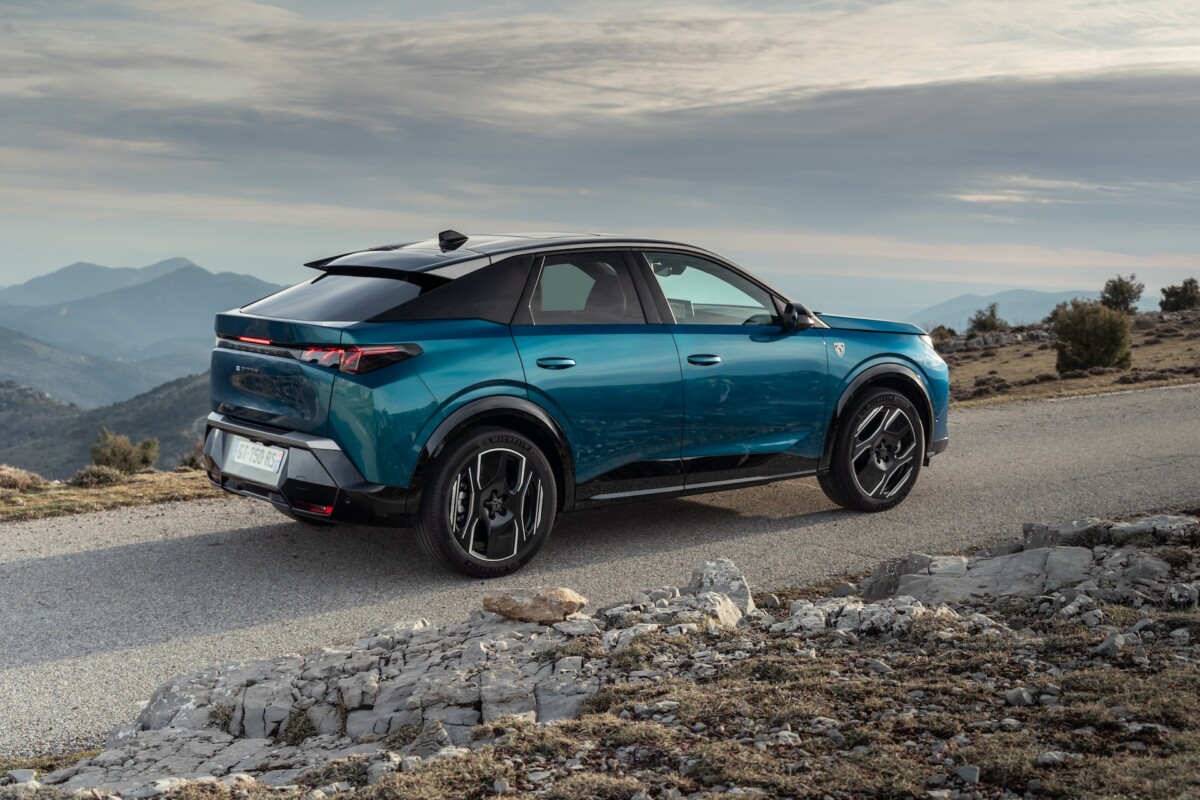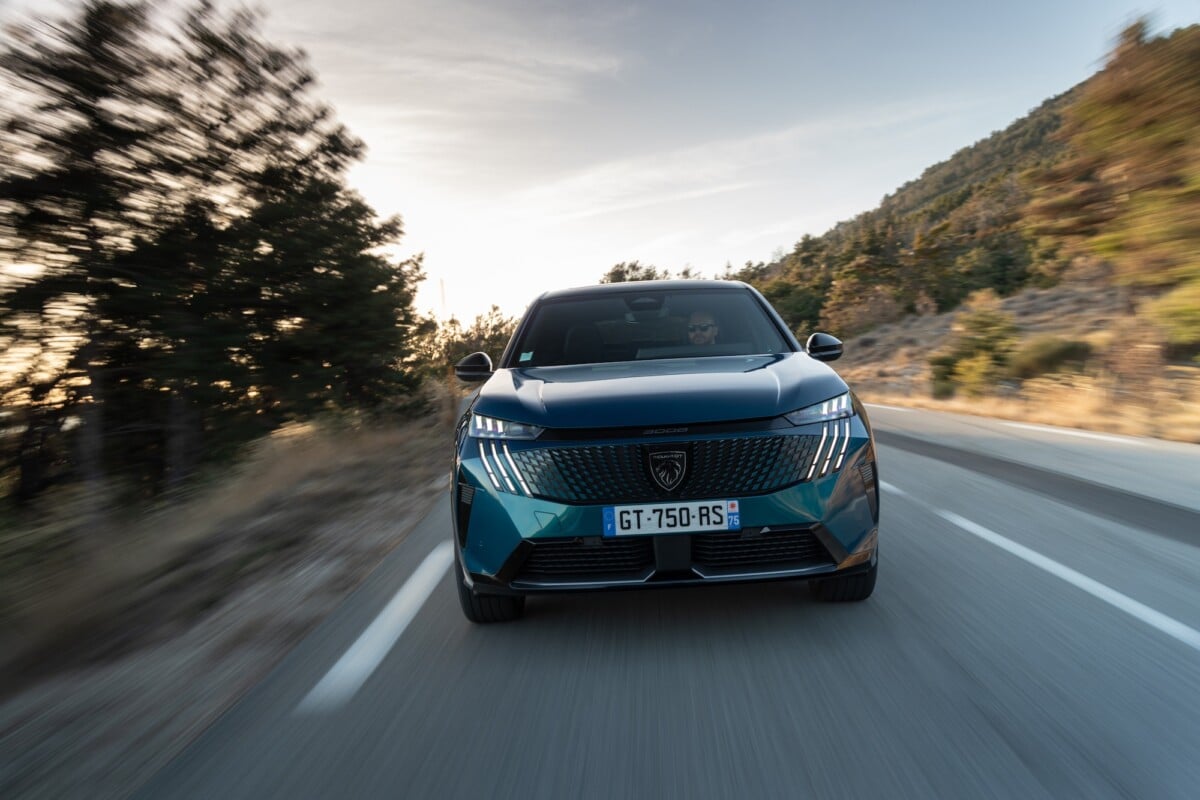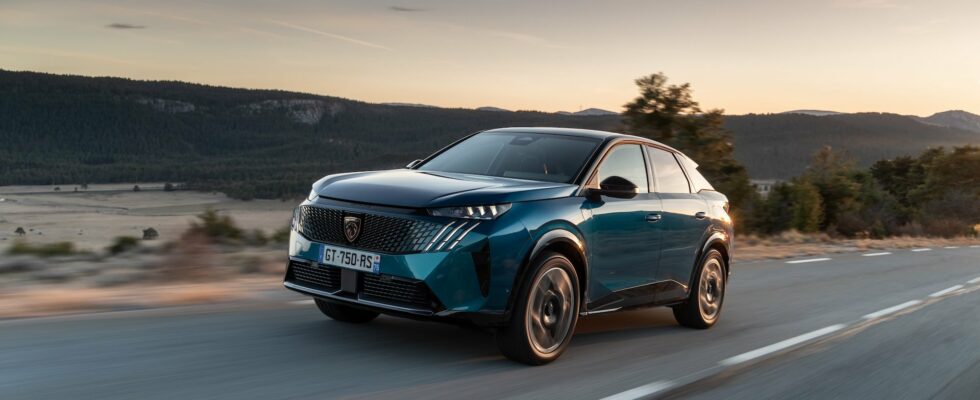Announced with 700 kilometers of autonomy, the Peugeot e-3008 with the largest battery gives us some news. And these are disappointing, since the new French electric car is finally lowering its ambitions and limiting itself to 680 kilometers.
Article updated on March 12, 2024 : Peugeot contacted our colleague at Numerama to inform him that this new, decreasing autonomy was a simple safety margin for advertisements, pending official approval. We should therefore expect an official WLTP range of between 680 and 700 km. A funny way to do it all the same, since the WLTP protocol is easily reproducible by car manufacturers.
Original article from March 11, 2024 : Peugeot already has a full range of electric cars. From the e-208 to the new e-3008, almost all segments are already covered, awaiting the arrival of the e-408 and e-5008, which was recently announced.
Disappointing autonomy
But the one that has been the most talked about in recent weeks is above all the new e-3008, which was unveiled last September and which we had the chance to see in preview. Then, we were able to test it a few weeks earlier, in its version with the lowest range, displayed at 527 kilometers according to the WLTP cycle. Which, however, remains enough to reassure motorists, who want at least 400 kilometers.
However, the Sochaux manufacturer plans to launch two more variants, one with higher power and another that can drive much more on a single charge. The latter was in fact announced at 700 kilometers, with its large 98 kWh battery. However, we were a little disappointed to learn that the latter would not be available before 2025. But that’s not all, because another bad news was announced.

And for good reason, by going to the website of the French firm, we discover that the figures have been slightly modified. The electric SUV is no longer announced up to 700 kilometers, but is confined to 680 kilometers, always according to the European WLTP approval cycle. A small disappointment, since this version was very promising on paper, making the e-3008 one of the mainstream electric cars with the highest autonomy.
However, this small drop is not dramatic either, rest assured. To tell the truth, the difference of 20 kilometers remains minimal, and should in fact be almost imperceptible. But then, what is the reason for this change, which risks being a bit of a disappointment to customers?
Approval still in progress
For the moment, the manufacturer does not communicate officially on this subject, and does not really give an explanation. However, on his site, he recalls that the data announced for this version covering the range are still in the process of approval. And therefore they are not completely definitive. This figure is not yet entirely in line with reality, and it may still change over the coming weeks.
This is also the case for the 320 horsepower four-wheel drive version, announced at 527 kilometers of autonomy. Here again, this remains subject to approval, and nothing has yet been officially recorded. However, if these data are to vary, the change will still be very limited. For the record, the version with 700 kilometers of autonomy, or rather 680, develops a power of 230 horsepowersent only to the front wheels.

The latter is capable of recovering up to 100 kilometers of range in just 10 minutes of charging, at a power of 160 kW in direct current on a fast terminal. Note that the electric SUV is also equipped with bidirectional charging, as well as the heat pump delivered as standard, as on the Renault Mégane E-Tech. Autonomous driving as well as braking regeneration are also part of the car’s equipment.
The latter has just started its deliveries, with a price displayed from 44,990 euros. Note that the vehicle benefits from a generous warranty of 8 years or 160,000 kilometers on its battery, but not only that.
